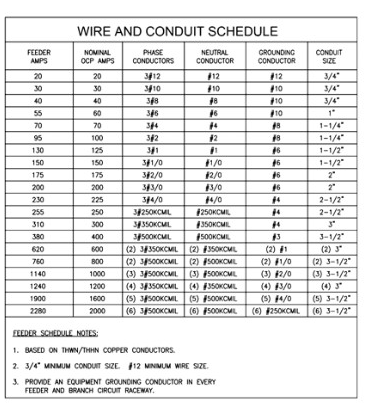When sizing conduit for electrical installations, following the guidelines of the National Electrical Code (NEC) is crucial to ensure safety and compliance. Conduit sizing is determined based on factors such as the number and size of conductors, the type of insulation, the application, and the ambient temperature. Here is a general overview of the process for sizing conduit based on the NEC Code 2020:
- Determine the total area and type of conductors: Calculate the cross-sectional area of all conductors that will be installed in the conduit. This includes the active conductors (current-carrying conductors) as well as the neutral and grounding conductors. Consider the type of insulation, such as THHN, THWN, or XHHW, as it affects the overall diameter of the conductors.
- Determine the allowable fill capacity: Refer to NEC Table 1, which provides guidelines for the maximum number and size of conductors allowed in different types of conduit. The table takes into account factors such as conduit material, conductor size, and insulation type.
- Calculate the total fill percentage: Calculate the total area of the conductors and divide it by the allowable fill capacity for the chosen conduit size. Multiply the result by 100 to obtain the fill percentage. The NEC recommends keeping the fill percentage below a certain threshold, typically 40-53%, depending on the conduit type and application. This ensures that the conductors can be easily installed and allows for future additions or modifications if necessary.
- Select an appropriate conduit size: Based on the calculated fill percentage, select a conduit size that accommodates the conductors while staying within the NEC’s fill ratio guidelines. If the fill percentage exceeds the recommended limits, you may need to choose a larger conduit size or consider multiple conduits.
- Consider other factors: Besides fill capacity, other factors such as the installation method, the presence of conductors of different sizes, and the need for future expansion should be taken into account. Some installations may require derating of conductors based on ambient temperature or bundling of multiple conductors, which can affect conduit sizing.

Remember, the process for sizing conduit can be complex and may vary depending on the specific installation and local code requirements. It’s crucial to consult the official NEC Code and any local amendments, as well as seek guidance from a qualified electrical professional, to ensure accurate and compliant conduit sizing for your specific project.


